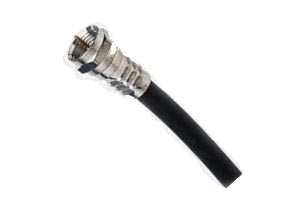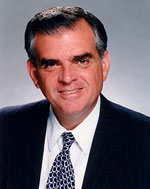Besides the double-taxation outrage that was deferred for a month, there were two other notable items passed by the council tonight:
- Boots for parking ticket scofflaws — The council passed the ordinance that would allow an immobilization device (commonly referred to as a “boot”) on a car that has five outstanding, unpaid parking tickets on it. There were two amendments made to the ordinance — one was to allow 48 hours (instead of 24) for the tickets to be paid before impounding the car after the boot is applied; the other was to send notice to scofflaws that their car will be booted if they don’t pay up via certified mail instead of just regular mail.
- Phase II of Riverfront
StonehengeVillage approved — Riverfront Village has not been successful. Every year for the past six years, on average, the city has taken $100,000 from the Central Business District TIF and used it to pay for Riverfront Village losses instead of using it to pay off the bonds of the TIF. That’s $600,000 it’s lost over six years.Nevertheless, based on the City Manager’s projections, the new three-story office building that developer Mike Wisdom wants to erect on the stilted concrete pad will make that deficit disappear. I’ll believe it when I see it. Projections don’t mean much — the original project was supposed to break even, not lose $100,000 per year. We’ll see if these new projections are any more accurate than the last ones.
One thing they’re going to do is apparently build a new pedestrian walkway that will take visitors right down to the new museum square. Considering how much money the museum project hasn’t raised, this walkway could be our own personal “bridge to nowhere.”
Update (3/28): A couple of things about the Riverfront Village project. If I could wave a magic wand, I would get rid of it as it’s currently configured. I’m not philosophically opposed to having development along the riverfront, but I think you should be able to actually see the river and enjoy the river view from said development, that it should be pedestrian-friendly, and it should be aesthetically pleasing. But, considering the monstrosity we know as Riverfront Village is already there and we can’t feasibly tear it down, we should take this lemon and try to make lemonade if we can. Perhaps this “Phase II” is a way to do that.
Regarding the pedestrian walkway, it’s come to my attention that my post made it sound like I was saying it would span Water street and the train tracks — no, no, it doesn’t do that. It’s just that it’s supposed to “connect” (the City’s word) with Museum Square eventually. Essentially what it does is provide access to the concrete pad from the Water Street side so you don’t have to walk around to the river side to get up to the businesses on top. It’s hard to argue that this wouldn’t be an improvement. But the council communication made it sound like the purpose was to poise it for connection with Museum Square, which seemed like a spurious use of city money.

 There are two articles in the Journal Star this morning regarding Peoria Heights’ desire to look at the feasibility of putting a trolley on the Kellar Branch rail line (
There are two articles in the Journal Star this morning regarding Peoria Heights’ desire to look at the feasibility of putting a trolley on the Kellar Branch rail line ( Parking scofflaws beware, you may find your car immobilized if the city passes a new ordinance Tuesday night.
Parking scofflaws beware, you may find your car immobilized if the city passes a new ordinance Tuesday night. On April 15, 2006, Peoria’s 20-year cable franchise agreement with Insight Communications expired. As of today, we still have no cable franchise agreement, but City Attorney Randy Ray is hopeful that we will soon. In an e-mail I received in response to my question on how negotiations were going, he said this:
On April 15, 2006, Peoria’s 20-year cable franchise agreement with Insight Communications expired. As of today, we still have no cable franchise agreement, but City Attorney Randy Ray is hopeful that we will soon. In an e-mail I received in response to my question on how negotiations were going, he said this: Earlier this month, Ray LaHood voted against the Employee Free Choice Act (which passed the House anyway, 241-185),
Earlier this month, Ray LaHood voted against the Employee Free Choice Act (which passed the House anyway, 241-185),